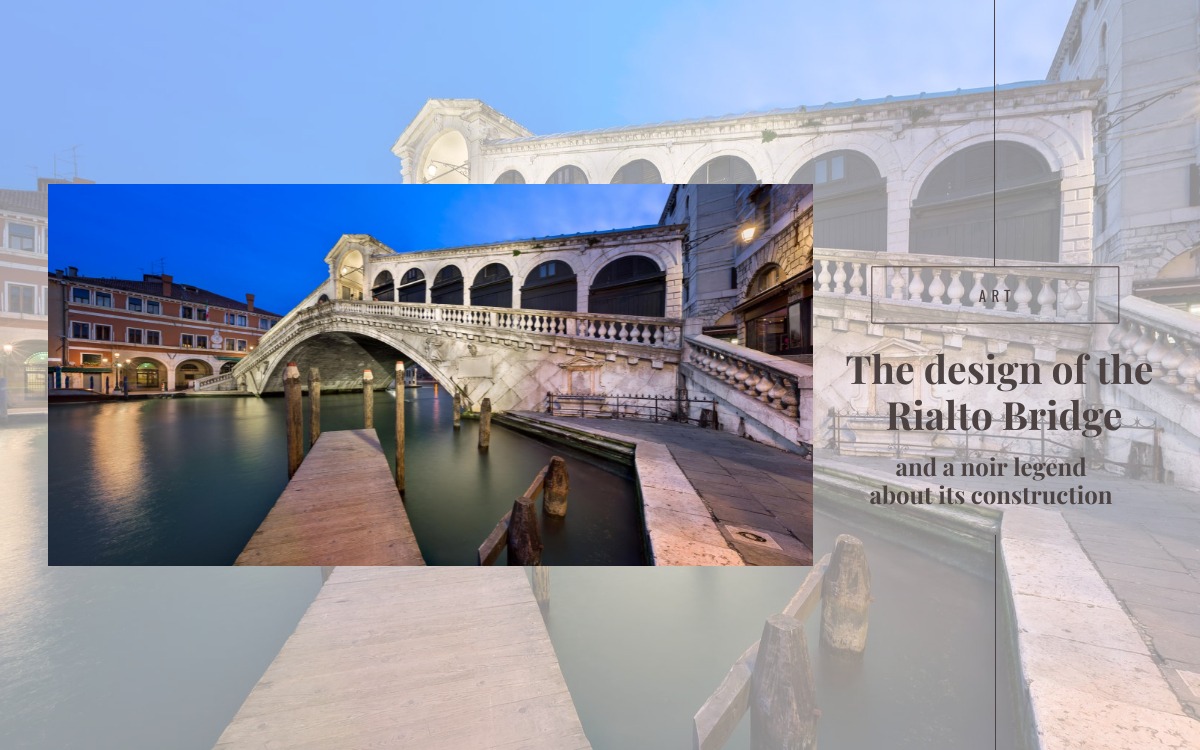Venice has always been one of the most evocative and visited cities in the world thanks to its unique morphology, countless monuments and incredible history.
Piazza San Marco, Palazzo Ducale, the Basilica of San Marco, the Bridge of Sighs, the Grand Canal, the Basilica of Santa Maria della Salute and the Rialto Bridge are just some of the reasons why thousands of tourists choose Venice as their travel destination.
But the charm of the lagoon also comes from the countless stories and legends behind it, like that concerning the construction of the Rialto Bridge.
The history of the Rialto Bridge
The Rialto Bridge is one of the symbols of Venice and is beloved for its unique style, the panoramic view of the Grand Canal it offers and the harmony of its shapes and finishes.
However, few know that once the Rialto Bridge once looked completely different: the structure was designed and built in wood in 1264, and over the centuries it was repeatedly destroyed and reconstructed to meet various needs.
At a certain point, in order to allow merchant boats to navigate the Grand Canal, the Rialto Bridge was demolished and rebuilt in classic drawbridge style with a mechanism for it to rise whenever a larger boat had to pass, so it would then lower itself again and allow people to cross the Canal.
It was a necessary and fundamental choice because at the time the Grand Canal logistically represented an indispensable way to optimise Venice’s trade, which it carried out with practically with the entire known world.
During the sixteenth century, for the first time in the bridge’s history, it was decided to change the type of structure, abandoning wood and designing a stone construction.
Plans were laid for extraordinary works, and many architects and artists their own proposed designs, including Michelangelo and Andrea Palladio.
The design chosen was that presented by Antonio Da Ponte, which imagined the Rialto Bridge as we can still appreciate it today, and works on it were completed in 1591.
The legend about the construction of the Rialto Bridge by Antonio Da Ponte
The designs submitted by the many architects and artists who applied to build the new stone bridge created divisions between public opinion to the point that, when it was decided to entrust the work to Antonio Da Ponte, there were numerous demonstrations of discontent: many people and influential figures of the time, in fact, believed that Andrea Palladio’s design was the best and most worthy to represent the glory of the Serenissima.
It was probably in this climate of division that a story began to be told about the new Rialto Bridge, which was destined to become a legend.
According to the legend, Antonio Da Ponte made a pact with the devil who, in exchange for making the project a success, would take the soul of the first human being who passed over the new bridge.
In attempt to get around this pact, the architect made a rooster pass over first, a decision that triggered the devil to take revenge: he made sure that the first human being to cross the bridge was Antonio Da Ponte’s wife, who died together with the child she was carrying in her womb.
It was said that the child’s soul had wandered on the Rialto Bridge for years before being able to break the curse and find eternal peace on board a gondola that took him away.
There are many legends and mysteries that have become part of the history of the city itself over time: love stories, terrifying stories, suspicious otherworldly presences, unusual apparitions and also strange disappearances are just some of the stories belonging to the secret part of Venice that not everyone knows.
To learn more read this article and then organise a visit to Venice to see these magical places first hand!




